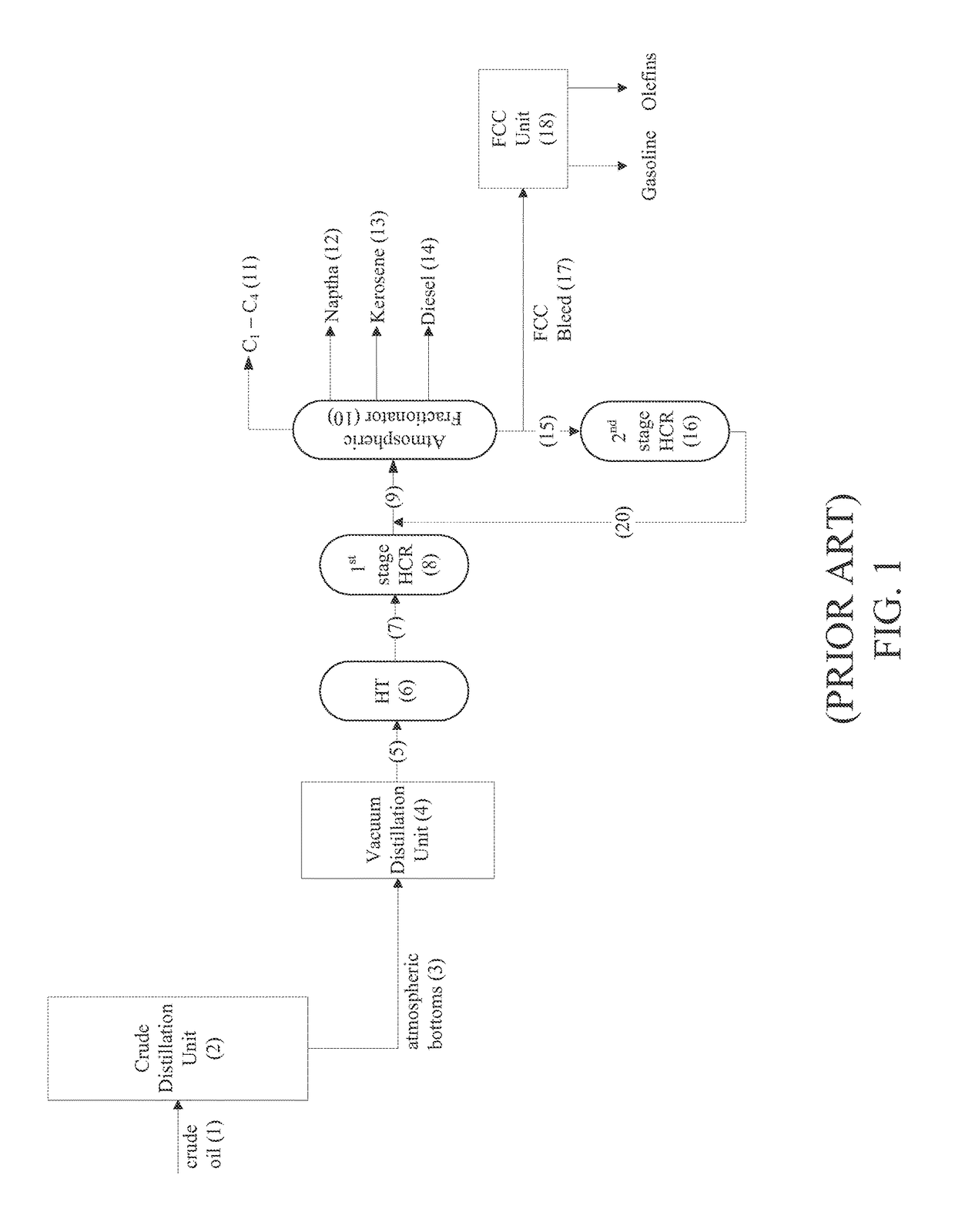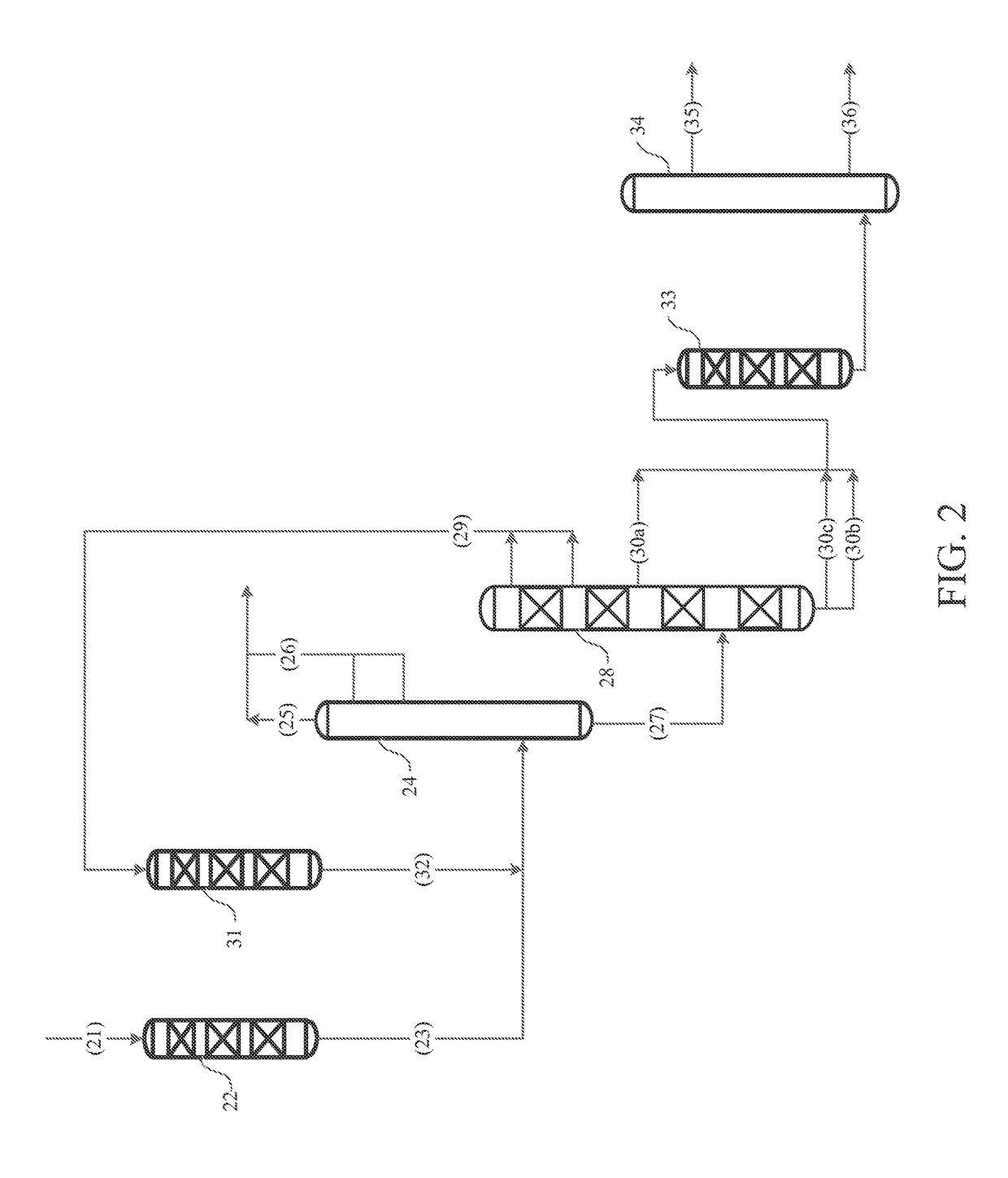Two-stage hydrocracking process for making heavy lubricating base oil from a heavy coker gas oil blended feedstock
a technology of coker gas and blended feedstock, which is applied in the direction of lubricating oil distillation, hydrocarbon distillation, lubricant composition, etc., can solve the problems of limiting the types of feedstocks available for use in two-stage hydrocracking units, lessening the life of catalysts, and refineries often struggle to find ways to dispose of hcgo streams
- Summary
- Abstract
- Description
- Claims
- Application Information
AI Technical Summary
Benefits of technology
Problems solved by technology
Method used
Image
Examples
Embodiment Construction
Introduction
[0023]“Periodic Table” refers to the version of IUPAC Periodic Table of the Elements dated Jun. 22, 2007, and the numbering scheme for the Periodic Table Groups is as described in Chemical and Engineering News, 63(5), 27 (1985).
[0024]“Hydroprocessing” refers to a process in which a carbonaceous feedstock is brought into contact with hydrogen and a catalyst, at a higher temperature and pressure, for the purpose of removing undesirable impurities and / or converting the feedstock to a desired product.
[0025]“Hydrotreating” refers to a process that converts sulfur- and / or nitrogen-containing hydrocarbon feeds into hydrocarbon products with reduced sulfur and / or nitrogen content, typically in conjunction with a hydrocracking function, and which generates hydrogen sulfide and / or ammonia (respectively) as byproducts.
[0026]“Hydrocracking” refers to a process in which hydrogenation and dehydrogenation accompanies the cracking / fragmentation of hydrocarbons, e.g., converting heavier ...
PUM
| Property | Measurement | Unit |
|---|---|---|
| API gravity | aaaaa | aaaaa |
| boiling point | aaaaa | aaaaa |
| boiling point | aaaaa | aaaaa |
Abstract
Description
Claims
Application Information
 Login to View More
Login to View More - R&D
- Intellectual Property
- Life Sciences
- Materials
- Tech Scout
- Unparalleled Data Quality
- Higher Quality Content
- 60% Fewer Hallucinations
Browse by: Latest US Patents, China's latest patents, Technical Efficacy Thesaurus, Application Domain, Technology Topic, Popular Technical Reports.
© 2025 PatSnap. All rights reserved.Legal|Privacy policy|Modern Slavery Act Transparency Statement|Sitemap|About US| Contact US: help@patsnap.com


